The Zynq Book: Embedded Processing with the ARM Cortex-A9 on the Xilinx Zynq-7000 All Programmable SoCLouise H Crockett, Ross A Elliot, Martin A Enderwitz, Robert W Stewart This book is about the Zynq-7000 All Programmable System on Chip, the family of devices from Xilinx that combines an application-grade ARM Cortex-A9 processor with traditional FPGA logic fabric. Catering for both new and experienced readers, it covers fundamental issues in an accessible way, starting with a clear overview of the device architecture, and an introduction to the design tools and processes for developing a Zynq SoC. Later chapters progress to more advanced topics such as embedded systems development, IP block design and operating systems. Maintaining a 'real-world' perspective, the book also compares Zynq with other device alternatives, and considers end-user applications. The Zynq Book is accompanied by a set of practical tutorials hosted on a companion website. These tutorials will guide the reader through first steps with Zynq, following on to a complete, audio-based embedded systems design. Rethinking the Internet of Things: A Scalable Approach to Connecting EverythingFrancis daCosta Over the next decade, most devices connected to the Internet will not be used by people in the familiar way that personal computers, tablets and smart phones are. Billions of interconnected devices will be monitoring the environment, transportation systems, factories, farms, forests, utilities, soil and weather conditions, oceans and resources.
Many of these sensors and actuators will be networked into autonomous sets, with much of the information being exchanged machine-to-machine directly and without human involvement. Machine-to-machine communications are typically terse. Most sensors and actuators will report or act upon small pieces of information - “chirps”. Burdening these devices with current network protocol stacks is inefficient, unnecessary and unduly increases their cost of ownership.
This must change. The architecture of the Internet of Things must evolve now by incorporating simpler protocols toward at the edges of the network, or remain forever inefficient. Rethinking the Internet of Things describes reasons why we must rethink current approaches to the Internet of Things. Appropriate architectures that will coexist with existing networking protocols are described in detail. An architecture comprised of integrator functions, propagator nodes, and end devices, along with their interactions, is explored. What youll learn Discusses the difference between the "normal" Internet and the Internet of Things.Describes a new architecture and its components in the "chirp" context.Explains the shortcomings of IP for IoT.Describes the anatomy of the IoT.Describes how to build a suitable network to maximize the amazing potential of the IoT.Who this book is for
Thought leaders, executives, architectural, standards and development leaders in the evolving IoT industry. Corporations and organizations whose commercial products could be adapted simply to be functioning devices on the IOT while saving billions of dollars in unnecessary costs or proprietary designs. Those who wish to capitalize on technology change and those interested in the Internet, its capabilities and the need to improve it.
Table of Contents Foreword
Preface
Chapter Goal: The reader will understand the new demands and opportunities of the Internet of Things (IoT). The preface introduces the idea of a new, simplified architectural approach that draws on nature.
Chapter 1: It's Different Out Here
Chapter Goal: Reader should understand the difference between traditional Internet networking and the Internet of Things. What are the unique characteristics of the IoT that demand a new architecture? Why traditional architectures such as IP are a poor fit. Characteristics of an IoT-optimized architecture.
Chapter 2: Anatomy of the Internet of Things
Chapter Goal: Reader will understand the underlying principles of the emerging IoT architecture. Fundamental concepts are: the division of networking complexity among different devices; the make-up of the "Chirp" and how they are propagated; distinctions between transport and functional topologies; the concept of neighborhoods or zones of interest.
Chapter 3: On the Edge
Chapter Goal: Reader will learn the principles and characteristics of the End Devices in the IoT and how these will often differ from our present understanding of the Smartphone, tablet, and laptop. How the minimal networking needs of many IoT devices dictate elements of the architecture.
Chapter 4: Building a Web of Things
Chapter Goal: Reader will learn the characteristics and functionality of the Propagator node in the IoT Architecture. Some communications principles are introduced which will be more fully explored in Chapter 6.
Chapter 5: Small Data, Big Data, and Human Interaction
Chapter Goal: Reader will understand the role of Integrator functions in the IoT, the point in the IoT where humans interact to gain information from IoT data and to set parameters and control end devices. An explanation of zones of interest and neighborhoods, with a discussion of incorporating "small data" from chirps into big data analysis.
Chapter 6: An Architecture for the Frontier
Chapter Goal: Reader will gain an understanding of the challenges inherent in a communications architecture for the massive scale of the IoT. Exploiting the opportunities inherent in a machine-to-machine environment, a much simpler architecture is described in detail that readily scales to the required scope. This chapter adds technical depth to ideas introduced in Chapters 3-5.
Chapter 7: IoT Examples and Applications
Chapter Goal: Reader will learn about current and emerging applications in the Internet of Things. Reference wile b made to new applications enabled by the simpler architecture described in this book that are difficult or not possible with traditional networking protocols.
Chapter 8: Blueprint to the Internet of Things
Chapter Goal: Exploring the steps to IoT deployment. Standards based versus ad hoc approaches, call for industry cooperation and consortia. Intermediate incremental steps to broader adoption. Rapid BeagleBoard Prototyping with MATLAB and SimulinkDr Xuewu Dai, Dr Fei Qin Leverage the power of BeagleBoard to develop and deploy practical embedded projects
OverviewDevelop and validate your own embedded audio/video applications rapidly with BeagleboardCreate embedded Linux applications on a pure Windows PCFull of illustrations, diagrams, and tips for rapid Beagleboard prototyping with clear, step-by-step instructions and hands-on examples
In Detail
As an open source embedded single-board computer with many standard interfaces, Beagleboard is ideal for building embedded audio/video systems to realize your practical ideas. The challenge is how to design and implement a good digital processing algorithm on Beagleboard quickly and easily without intensive low-level coding
Rapid BeagleBoard Prototyping with MATLAB and Simulink is a practical, hands-on guide providing you with a number of clear, step-by-step exercises which will help you take advantage of the power of Beagleboard and give you a good grounding in rapid prototyping techniques for your audio/video applications.
Rapid BeagleBoard Prototyping with MATLAB and Simulink looks at rapid prototyping and how to apply these techniques to your audio/video applications with Beagleboard quickly and painlessly without intensive manual low-level coding. It will take you through a number of clear, practical recipes that will help you to take advantage of both the Beagleboard hardware platform and Matlab/Simulink signal processing. We will also take a look at building S-function blocks that work as hardware drivers and interfaces for Matlab/Simulink. This gives you more freedom to explore the full range of advantages provided by Beagleboard.
By the end of this book, you will have a clear idea about Beagleboard and Matlab/Simulink rapid prototyping as well as how to develop voice recognition systems, motion detection systems with I/O access, and serial communication for your own applications such as a smart home.
What you will learn from this bookUnderstand rapid prototyping on a Windows host, including Matlab/Simulink code generation for BeagleboardSet up a cross-development environment on Windows for BeagleboardAccess Beagleboard’s GPIO pins and RS232 communication in Matlab and SimulinkDevelop your own S-function block in Simulink to access Beagleboard’s hardware devicesCreate an audio player and equalizer in Simulink, including audio file readingAdjust the parameters of your target system on-the-fly for the purpose of performance optimizationPenetrate into an infrared sensor in Matlab/Simulink for smart home applicationsBuild a video motion detection system for security applications
Approach
This book is a fast-paced guide with practical, hands-on recipes which will show you how to prototype Beagleboard-based audio/video applications using Matlab/Simlink and Sourcery Codebench on a Windows host.
Who this book is written for
Rapid BeagleBoard Prototyping with MATLAB and Simulink is great for students and academic researchers who have practical ideas and who want to build a proof-of-concept system on an embedded hardware platform quickly and efficiently. It is also useful for product design engineers who want to ratify their applications and reduce the time-to-market. It is assumed that you are familiar with Matlab/Simulink and have some basic knowledge of computer hardware. Experience in Linux is favoured but not necessary, as our software development is purely on a Windows host. Advanced Mac OS X ProgrammingMark Dalrymple, Aaron Hillegass There are several other books on programming for Mac OS X, but none of them comtain explanations of how to leverage the powerful underlying technologies. This book goes down to the real nitty-gritty of multi-threading, interprocess communication, networking, performance tuning, distributed objects, queues, Bonjour, authentication, the keychain, and directory services. The tools are also covered: gcc, gdb, subversion, Shark, and Saturn. Learn Objective–C on the MacMark Dalrymple, Scott Knaster Take your coding skills to the next level with this extensive guide to Objective–C, the native programming language for developing sophisticated software applications for Mac OS X. Objective–C is a powerful, object–oriented extension of C, making this book the perfect follow–up to Dave Mark’s best–selling Learn C on the Mac, Mac OS X Edition. Whether you’re an experienced C programmer or you’re coming from a different language such as C++ or Java, leading Mac experts Mark Dalrymple and Scott Knaster show you how to harness the powers of Objective–C in your applications! A complete course on the basics of Objective–C using Apple’s free Xcode toolsAn introduction to object–oriented programmingComprehensive coverage of inheritance, composition, object initialization, categories, protocols, memory management, and organizing source filesA brief tour of Cocoa’s Foundation framework and AppKitA helpful “learning curve” guide for non–C developers
What you’ll learn Learn Objective–C programming, the gateway to programming your Mac or iPhone.Write applications for the Mac OS X interface, the cleanest user–interface around.Understand variables and how to design your own data structures.Work with the file system.Connect to data sources and the Internet.
Who is this book for?
For anyone wanting to learn to program native applications in Mac OS X, including developers new to the Mac, developers new to Objective–C, or students entirely new to programming. | Inside Microsoft SQL Server 2000 - Insiderwissen für Datenbankentwickler, m. 2 CD-ROMsKalen Delaney, Ron Soukup Der Microsoft SQL Server 2000 ist das Produkt, um skalierbare, große relationale Datenmengen in der Microsoft-Backoffice-Familie zu verwalten. Auch diese Applikation fügt sich nahtlos in die Windows-NT-4.0- und 2000-Server-Umgebung ein und nutzt vom Betriebssystem bereitgestellte Services.
In den ersten beiden Teilen wird ein kurzer Überblick über Entwicklung und Architektur als auch den SQL Server im Allgemeinen gegeben. Es werden die herausragendsten Features beschrieben und das Zusammenspiel der verschiedenen Komponenten erklärt.
Im folgenden Teil wird mit Blick auf den im Hintergrund laufenden Datenbank-Engine die Verwendung besprochen. Hierzu gehört die Planung und das Durchführen der Installation sowie das Modifizieren der Datenbanken, Tabellen/Indizes und der Daten selbst. Es wird neben Standard-SQL auch das Programmieren mit Transact-SQL behandelt. Hier erhalten Sie Wissen zu den speziellen Systemdatenbanken und Datenbankdateien des SQL Server 2000.
Abschließend folgt der Teil, der sich mit der Leistungsoptimierung befasst. Das Sperrmanagement, der Abfrageprozessor — insbesondere die Abfrageoptimierung — und Aspekte der Systemüberwachung und Konfiguration von Betriebssystem und SQL Server werden hier behandelt.
Dieses Buch ist ein unschätzbarer Begleiter, um den SQL Server 2000 in seinen Tiefen zu verstehen und effizient zu programmieren. Sie finden Unterstützung, um sowohl ein vorhandenes System zu tunen als auch um eine neue Umgebung aufzusetzen. Auf den zwei Begleit-CD-Roms finden Sie neben einer 120-Tage-Evaluierungsversion der SQL Server 2000 Enterprise Edition auch Beispielcodes und Skripte und ergänzend auch die elektronische Version dieses Buches.
Dies ist kein Buch für Anfänger, sondern ein für Datenbankadministratoren konzipiertes Werk, die das Maximum aus einer SQL-Server-Installation herausholen wollen. —Manfred Ackermann Raspberry Pi Computer Architecture EssentialsAndrew K. Dennis Key Features Explore Raspberry Pi 2's hardware through the Assembly, C/C++, and Python programming languagesExperiment with connecting electronics up to your Raspberry Pi 2 and interacting with them through softwareLearn about the Raspberry Pi 2 architecture and Raspbian operating system through innovative projectsBook Description
With the release of the Raspberry Pi 2, a new series of the popular compact computer is available for you to build cheap, exciting projects and learn about programming.
In this book, we explore Raspberry Pi 2's hardware through a number of projects in a variety of programming languages. We will start by exploring the various hardware components in detail, which will provide a base for the programming projects and guide you through setting up the tools for Assembler, C/C++, and Python. We will then learn how to write multi-threaded applications and Raspberry Pi 2's multi-core processor. Moving on, you'll get hands on by expanding the storage options of the Raspberry Pi beyond the SD card and interacting with the graphics hardware. Furthermore, you will be introduced to the basics of sound programming while expanding upon your knowledge of Python to build a web server. Finally, you will learn to interact with the third-party microcontrollers.
From writing your first Assembly Language application to programming graphics, this title guides you through the essentials. What you will learn Set up your Raspberry Pi 2 and learn about its hardwareWrite basic programs in Assembly Language to learn about the ARM architectureUse C and C++ to interact with electronic componentsFind out about the Python language and how to use it to build web applicationsInteract with third-party microcontrollersExperiment with graphics and audio programmingExpand Raspberry Pi 2's storage mechanism by using external devicesDiscover Raspberry Pi 2's GPIO pins and how to interact with themAbout the Author
Andrew K. Dennis is the manager of professional services software development at Prometheus Research. Prometheus Research is a leading provider of integrated data management for research and is the home of HTSQL, an open source navigational query language for RDBMS.
Andrew has a diploma in computing, a BSc in software engineering, and is currently studying for a second BSc in creative computing in his spare time.
He has over 12 years of experience working in the software industry in the UK, Canada, and the USA. This experience includes e-learning courseware development, custom CMS and LMS development, SCORM consultancy, web development in a variety of languages, open source application development, blogging about the integration of web technologies with electronics for home automation, and punching lots of Cat5 cables.
His interests include web development, e-learning, 3D printing, Linux, the Raspberry Pi and Arduino, open source projects, home automation and the use of web technology in this sphere, amateur electronics, home networking, and software engineering. Table of Contents Introduction to the Raspberry Pi's Architecture and SetupProgramming on RaspbianLow-Level Development with Assembly LanguageMultithreaded Applications with C/C++Expanding on Storage OptionsLow-Level Graphics ProgrammingExploring the Raspberry Pi's GPIO PinsExploring Sound with the Raspberry Pi 2Building a Web ServerIntegrating with Third-Party MicrocontrollersFinal Project Python Programming for ArduinoPratik Desai Develop practical Internet of Things prototypes and applications with Arduino and PythonAbout This Book Transform your hardware ideas into real-world applications using Arduino and PythonDesign and develop hardware prototypes, interactive user interfaces, and cloud-connected applications for your projectsExplore and expand examples to enrich your connected device's applications with this step-by-step guideWho This Book Is For
This is the book for you if you are a student, hobbyist, developer, or designer with little or no programming and hardware prototyping experience, and you want to develop IoT applications.
If you are a software developer or a hardware designer and want to create connected devices applications, then this book will help you get started. In Detail
The future belongs to applications and services that involve connected devices, requiring physical components to communicate with web-level applications. Arduino combined with the popular open source software platform Python can be used to develop the next level of advanced Internet of Things (IoT) projects with graphical user interfaces and Internet-connected applications.
Starting with designing hardware prototypes using Arduino, this book will then show you everything you need to know to be able to develop complex cloud applications. You will delve into domain-specific topics with incremental complexity, ending with real-world projects. You will quickly learn to develop user interfaces, plots, remote access, messaging protocols, and cloud connectivity. Each successive topic, accompanied by plenty of examples, will help you develop your cutting-edge hardware applications. |

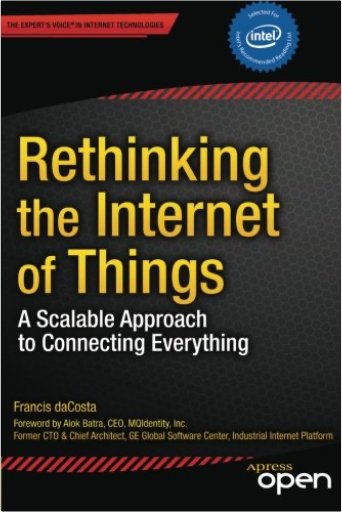

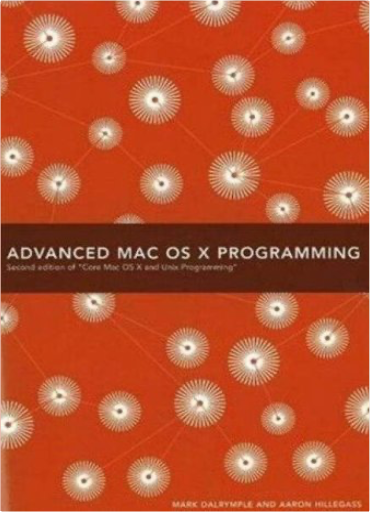


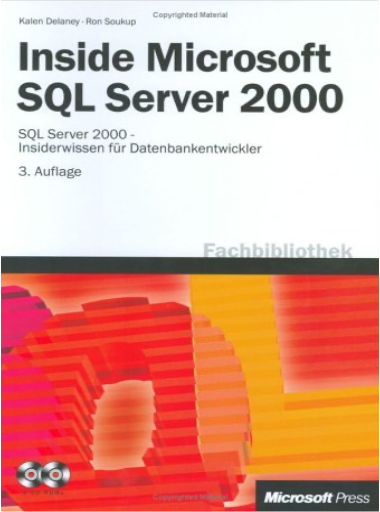
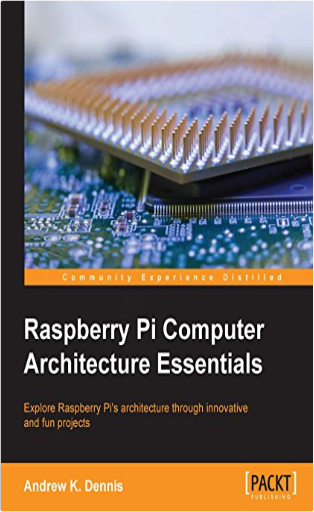



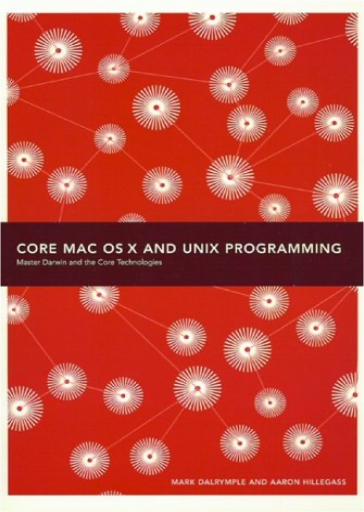
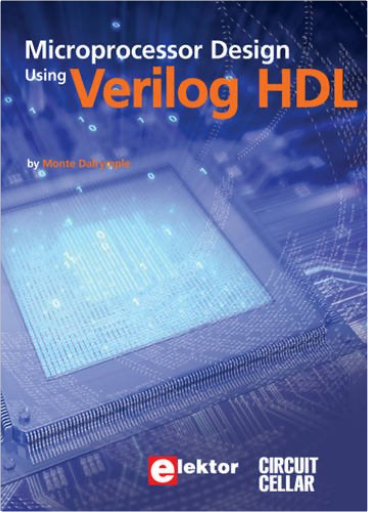
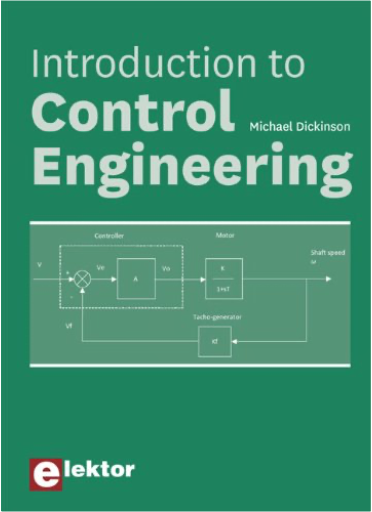
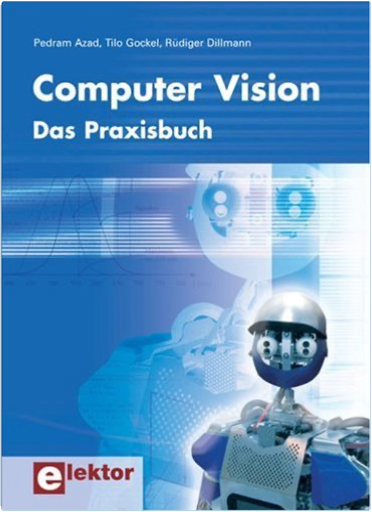
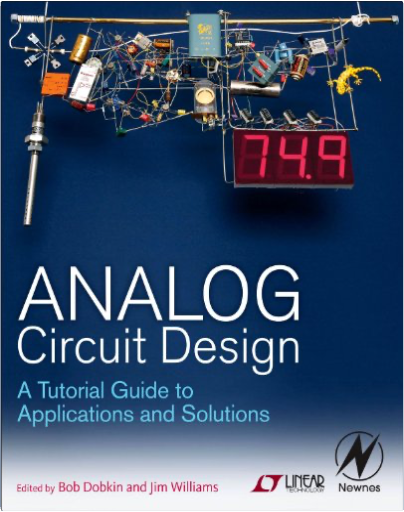
 Made with Delicious Library
Made with Delicious Library